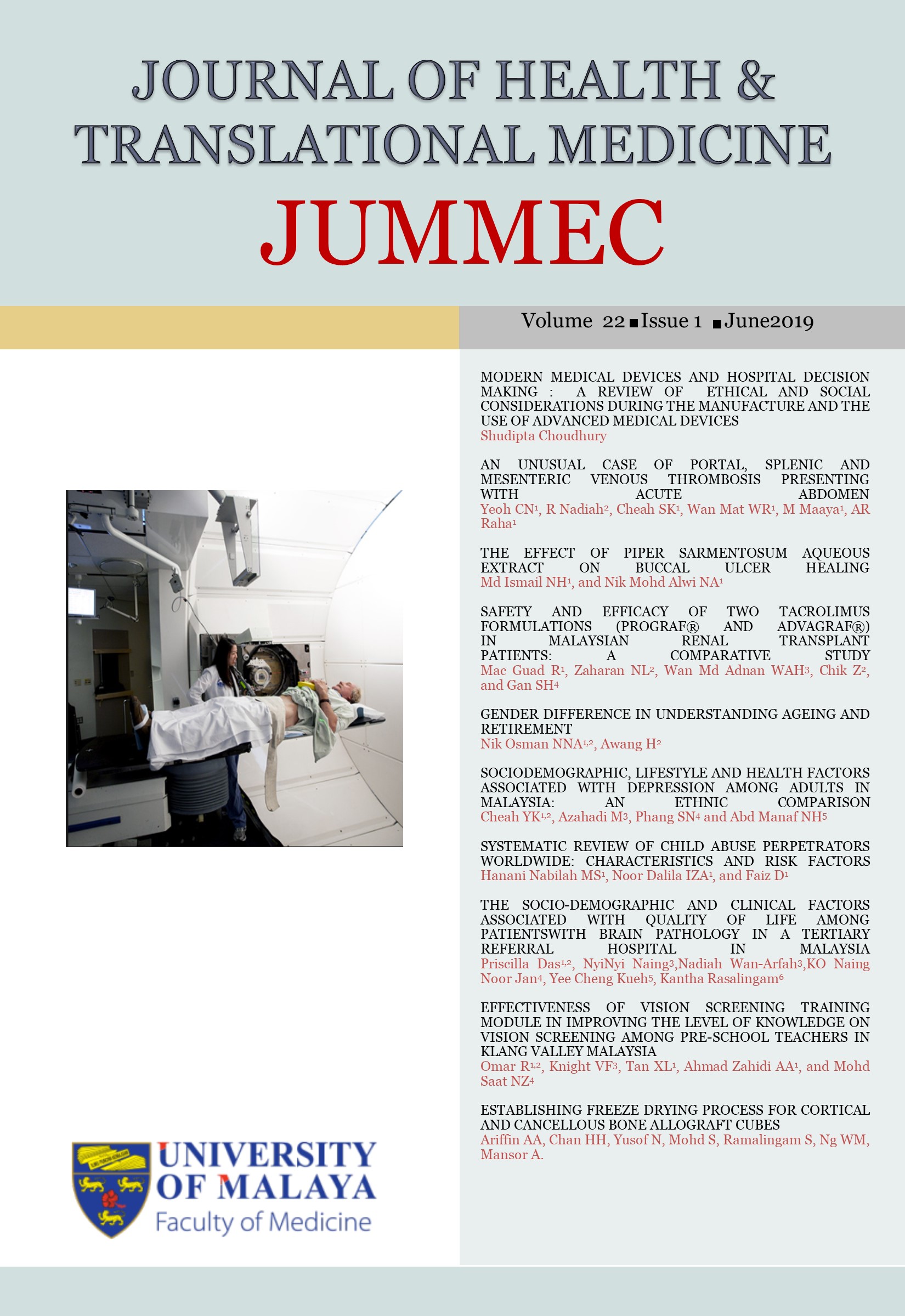ESTABLISHING FREEZE DRYING PROCESS FOR CORTICAL AND CANCELLOUS BONE ALLOGRAFT CUBES
Received 2018-11-13; Accepted 2019-04-16; Published 2019-06-29
DOI:
https://doi.org/10.22452/jummec.vol22no1.10Keywords:
Cortical, Cancellous, Freeze Drying, Water ContentAbstract
Introduction: Freeze drying is a dehydration method to dry bone under freezing environment, enabling removal of water with no or minimial effects on bone strength and durability. Larger size bones obviously require longer freeze drying time to reduce water content to the required level for long term storage at room temperature. For small size bone cubes or chips, it is a normal practise to pool cortical and cancellous bones for freeze drying. The study was aimed to determine if different type of bones but of the same size influence the drying time.
Methods: Human bone cubes of 10 x 10 x 10 mm were prepared from cortical bone of tibiae and cancellous bone from femoral heads. The bone cubes were freeze dried to reduce water content to less than 6%. Moisture content was monitored using gravimetric method.
Results: Weight and density of cortical bone were significantly higher than cancellous bone despite of having similar small size (p<0.05). Cortical bones (density 2.05 ± 0.35 g/cm3) with initial water content of 10.93% required 5 hours to freeze dry, while cancellous bone cubes (density 0.72 ± 0.44 g/cm3) with initial water content of 78.95% required only 1.87 hours.
Conclusion: This study confirmed that structure hence density of human bone cubes determine the freeze drying time. Therefore in the standard operating procedure for freeze drying of bone allograft cubes, high density cortical bone cubes and low density cancellous bone cubes must be freeze dried separately despite of similar small size.
Downloads
Downloads
Published
Issue
Section
License
All authors agree that the article, if editorially accepted for publication, shall be licensed under the Creative Commons Attribution License 4.0 to allow others to freely access, copy and use research provided the author is correctly attributed, unless otherwise stated. All articles are available online without charge or other barriers to access. However, anyone wishing to reproduce large quantities of an article (250+) should inform the publisher. Any opinion expressed in the articles are those of the authors and do not reflect that of the University of Malaya, 50603 Kuala Lumpur, Malaysia.


